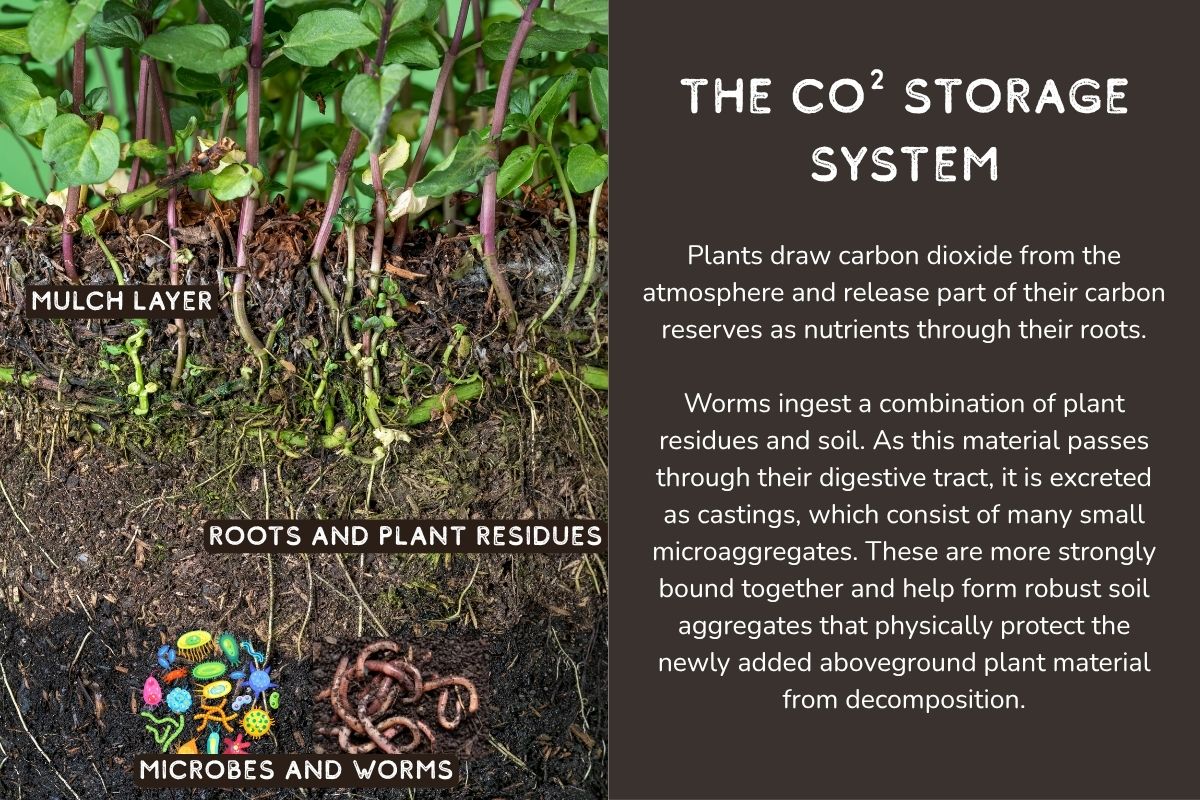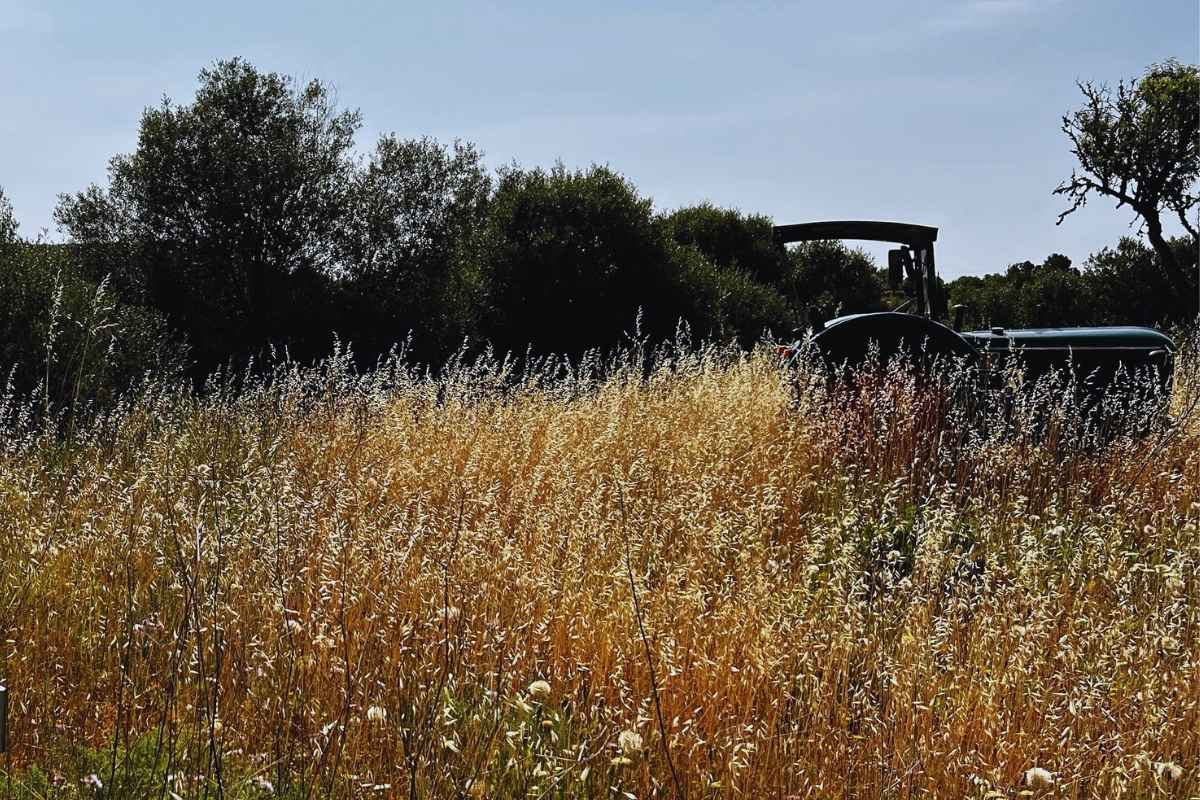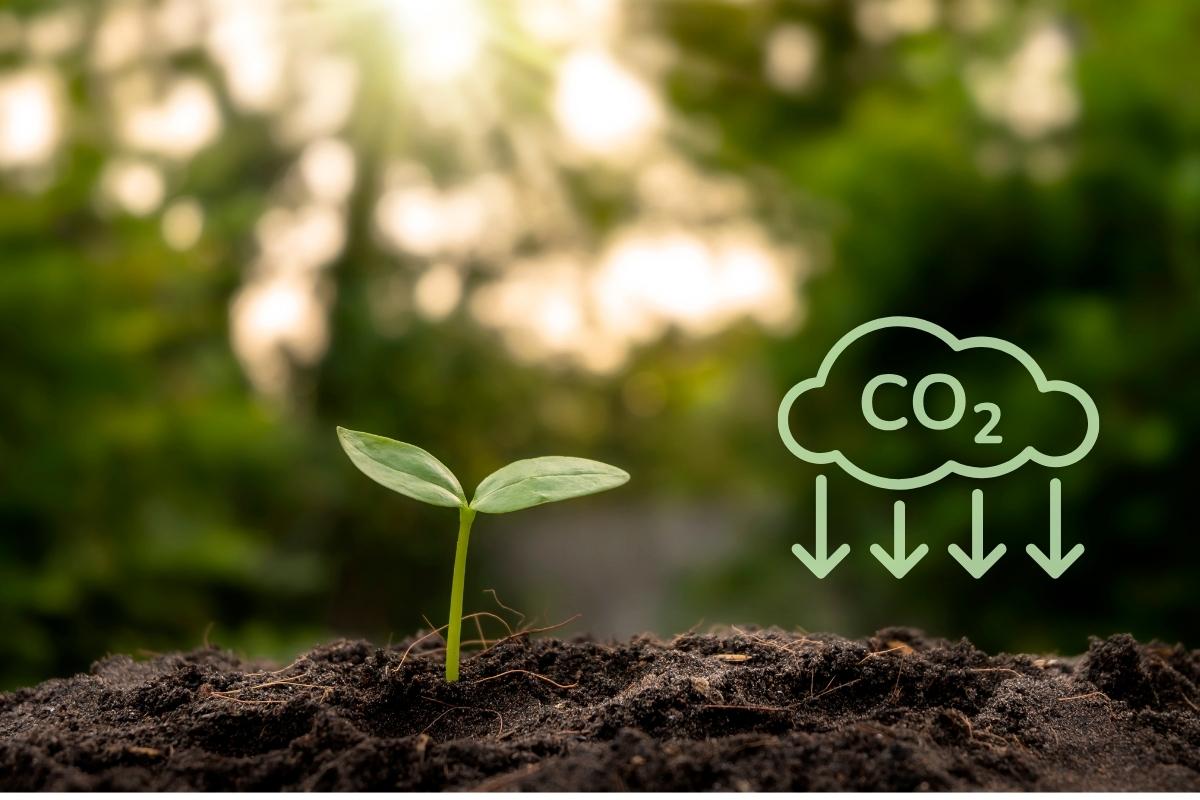-how does it work and why is it important?
What is CO₂ and how does it get into the soil?
CO₂ (carbon dioxide) is a gas that occurs in the air. Plants absorb CO₂ from the atmosphere and use it—together with sunlight and water—to build their leaves, stems, and roots. Part of this carbon enters the soil through the roots and dead plant material.
How does the soil store carbon?
Photosynthesis: Plants take up CO₂ and convert it into organic matter.
Roots & plant residues: As plants grow, die, or shed roots, carbon enters the soil.
Soil organisms: Microbes, fungi, and earthworms break down this material. Some of the carbon is released again as CO₂, while another part remains stored in the soil as humus.
Humus and organic matter: The stable portion of carbon can remain in the soil for years to centuries—this is called carbon storage or carbon sequestration.

How much carbon is in the soil?
Globally, soils store about 1,500 billion tons of carbon—that’s more than in the atmosphere and all plants combined!
Soil is thus the second largest carbon store on Earth, after the oceans.
Why is this important for the climate?
CO₂ is a greenhouse gas: The more CO₂ in the air, the warmer the Earth becomes.
Soils as a “CO₂ sink”: When soils store a lot of carbon, less CO₂ remains in the atmosphere—helping to slow climate change.
But: If soils are disturbed (e.g., by plowing, deforestation, or draining wetlands), stored carbon is released again as CO₂ and enters the atmosphere—accelerating climate change.
How can we store more CO₂ in the soil?
Good practices:
Little or no tillage: This keeps carbon in the soil.
Keep soil covered: With plants, mulch, or cover crops—protects against erosion and keeps soil alive.
Grow diverse crops: Different plant species support soil life and carbon storage.
Use compost and organic fertilizers: They add new carbon to the soil and support soil organisms.
Plant trees and shrubs: They store a lot of carbon and protect the soil.
Bad practices (to avoid!):
Frequent plowing or digging
Monocultures without crop rotation
Bare, uncovered soils
Excessive use of synthetic fertilizers and pesticides

What happens if we’re not careful?
Soils lose carbon: Due to intensive agriculture, deforestation, and poor management, soils worldwide have already lost 50–70% of their original carbon.
Climate change accelerates: This loss of carbon has caused about a quarter of all human-made greenhouse gas emissions.
Soils become infertile: Without humus, plants grow poorly and soils are more prone to erosion and flooding.
Summary
Soils are huge CO₂ stores and help protect the climate.
With good management, we can store more CO₂ in the soil.
If we treat soils poorly, a lot of CO₂ is lost and climate change gets worse.
Everyone can help: in the garden, on the farm, or through conscious consumption!
Remember:
Healthy soils are a key weapon in the fight against climate change—they store carbon, protect the climate, and ensure fertile fields!
Author: Francesco del Orbe


